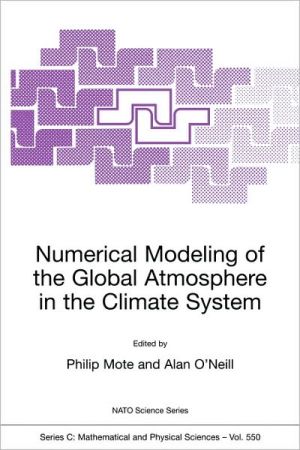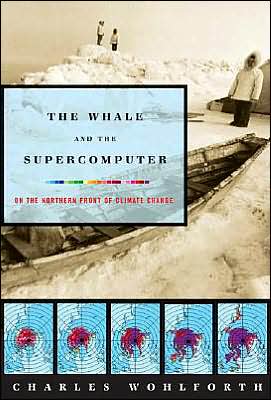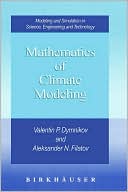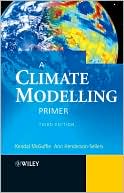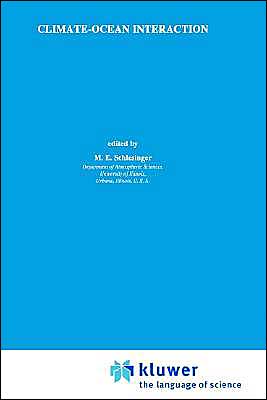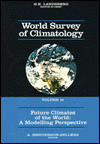Numerical Modeling of the Global Atmosphere in the Climate System
A broad, up to date treatment of the science of climate prediction. Topics covered include the use of atmospheric general circulation models (AGCMs) as tools for studying climate variability and predicting change, the design and analysis of AGCM experiments, the components of an AGCM (especially numerical techniques, representation of physical and chemical processes), and a selection of additional applications of AGCMs, including regional modelling, data assimilation and palaeoclimate...
Search in google:
A broad, up to date treatment of the science of climate prediction. Topics covered include the use of atmospheric general circulation models (AGCMs) as tools for studying climate variability and predicting change, the design and analysis of AGCM experiments, the components of an AGCM (especially numerical techniques, representation of physical and chemical processes), and a selection of additional applications of AGCMs, including regional modelling, data assimilation and palaeoclimate modelling. All authors are leading experts in their areas, ensuring that the text is both authoritative and unique. Readership: Advanced undergraduate and graduate students of atmospheric science and researchers in climate prediction and related fields. Booknews Arising out of a May-June 1998 conference sponsored by the North Atlantic Treaty Organization, these 21 chapters are designed to give young scientists a thorough grounding in the basic principles on which atmospheric general circulation models (GCMs) are constructed, an insight into their strengths and weaknesses, and guidance on how meaning numerical experiments are formulated and analyzed. Together, the chapters describe some general considerations in planning and executing an experiment with a GCM; explore the inner workings of a GCM, including a dynamical core and common parameterizations; and explain some of the present applications of GCMs. The book assumes a familiarity with the basic processes of atmosphere dynamics. Annotation c. Book News, Inc., Portland, OR (booknews.com)
Preface. Part 1: Preliminary considerations. 1. Weather and Climate GCMs: A memoir; K. Miyakoda. 2. The GCM as a Dynamical System: Implications for numerical simulations; J.-F. Royer. 3. Analysis and Verification of Model Climate; G.J. Boer. 4. Statistical Treatment of Model Output; M. Déqué. 5. Use of Simplified Atmospheric Models; J. Thuburn. 6. Designing a GCM Experiment: Fundamentals of the planning process; P.W. Mote. Part 2: Components of an Atmospheric General Circulation Model. 7. Numerical Approximations for global Atmospheric GCMs; D.L. Williamson, R. Laprise. 8. Boundary Layer Processes; N. McFarlane. 9. Moist Convection; N. McFarlane. 10. Clouds and Cloud Water Prediction; J.-J. Morcrette, et al. 11. Radiation; J.-J. Morcrette, S.A. Clough. 12. Gravity-Wave Drag; N. McFarlane. 13. Land Surface Processes and Hydrology; J.-R. Royer. 14. Atmospheric Chemistry and Aerosol Dynamics; J. Feichter. Part 3: Applying GCMs. 15. Atmospheric Data Assimilation; A. O'Neill. 16. Seasonal Predictions; P.W. Mote, et al. 17. Regional Models; M. Déqué. 18. Toward a Complete Model of the Climate System; B.A. Boville. 19. Climate Model Intercomparison; G.J. Boer. 20. Paleoclimate Modeling; P. Valdes. 21. Simulating Future Climate; G.J. Boer. Index.
\ BooknewsArising out of a May-June 1998 conference sponsored by the North Atlantic Treaty Organization, these 21 chapters are designed to give young scientists a thorough grounding in the basic principles on which atmospheric general circulation models (GCMs) are constructed, an insight into their strengths and weaknesses, and guidance on how meaning numerical experiments are formulated and analyzed. Together, the chapters describe some general considerations in planning and executing an experiment with a GCM; explore the inner workings of a GCM, including a dynamical core and common parameterizations; and explain some of the present applications of GCMs. The book assumes a familiarity with the basic processes of atmosphere dynamics. Annotation c. Book News, Inc., Portland, OR (booknews.com)\ \
